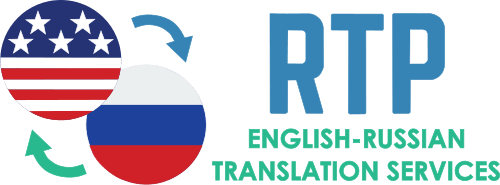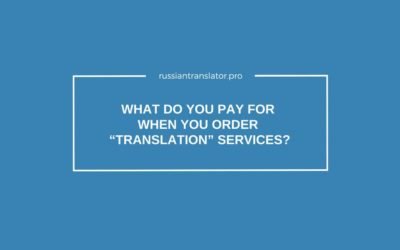The main properties of quality translation are accuracy, explicitness, and literacy. It is aesthetically pleasing to read a coherent, well-written text without grammatical and stylistic errors, not to mention that a random typographical error or a misspelled word in translation can significantly change the meaning of the original text.
- Why editing and proofreading cannot be neglected?
- What’s the difference between proofreading and editing?
- When can you save on editing and proofreading of the translated text?
You will find out the answers to these questions in this post.
NEED ENGLISH-RUSSIAN TRANSLATION?
MAKE YOUR ORDER TODAY AND
GET 10% OFF
Revision of the translated text is a crucial process required to eliminate all possible errors, lapses, and inconsistencies. Under certain circumstances, a document can be checked by a translator only, but it is impossible to go without a professional editor in case of important translation projects aimed at a global audience. Since revision processes may vary depending on the quality requirements of the project, translation quality control can be carried out through several techniques. Let’s see how they differ from each other.
Revision
By default, a translator shall revise the text upon completion of the translation. The purpose of this process is to rectify minor omissions or typos and to check the overall translation conformity with the original text.
However, according to the European translation standards, a specialist with a native-level proficiency in the target language shall revise the text after translation to ensure the best quality of outcome. Such a specialist should be able to not only read the text with a “fresh eye” and correct possible mistakes but also assess the consistency with the rules of the target language and the quality of the translation as a whole. Therefore, in an ideal case, the revision shall be entrusted to another translator with relevant skills. Depending on the level of revision, it is possible to outline two main quality control processes applied to the translated texts.
Proofreading
Many people erroneously believe that proofreading and editing is the same process. In fact, these are different types of services. In simple terms, proofreading is a general literacy check: identification and rectification of spelling, punctuation, and syntax mistakes.
However, proper proofreading after translation requires certain linguistic skills and knowledge. At times, even a literate native speaker cannot notice own mistakes in writing, so proofreading would be an essential requirement, especially when working on highly important projects.
Editing
Editing provides for the most thorough and in-depth revision of texts. It is not only about correcting grammatical mistakes and typos, but also refining the style, checking the correct use of terms and, if necessary, adapting the text taking into account cultural and audience-specific requirements. You can only let a professional editor do that job.
Editing services are required in case of translation of texts intended for a wide audience. These texts can include such documents as marketing and advertising materials, fiction books, scientific papers or websites.
Editing shall be an obligatory step of a quality control process in case of translation of medical, legal, technical and other highly specialized texts with complex terminology and specific tone of voice, when a single mistake may lead to disastrous consequences.
Looking for a Russian proofreader or editor?
When can editing be an optional step?
You can do without the services of a proofreader or editor when the translated text is intended for personal use only or for a small group of people. This could be the translation of personal correspondence, internal company documentation (documents used by a certain department), and general subject texts.
Simply put, if only the meaning of the translated text is important, while the small grammatical and stylistic flaws are irrelevant, there is no need to pay for editing. In other cases, you should definitely use proofreading and editing services so that you don’t get in trouble.
How do I order Russian proofreading or editing services?
Proofreading by a native Russian translator is included in the process by default in all three pricing packages we offer: Basic, Standard, and Premium. However, when you need an additional QC for a project with thousands of potential viewers, like a company website or an online app, I would recommend using the Premium translation package that includes in-depth editing and proofreading. The Standard translation package with proofreading by the second linguist is a perfect choice in case of translation of technical or legal texts, e.g. an equipment manual or a contract.
You can use the following contact methods to get a free consultation, order any of the above packages, or hire a Russian proofreader/editor to ensure quality control for your translation project: online chat in the right bottom corner of this page, email address: [email protected] or a phone: +996 773 91 52 69.
Like this post? Read more on Russian Translator Pro blog:
What do you pay for when you order “translation” services?
One of the most frequent requests I receive from new clients is as follows: "I need to translate this document/presentation/file/website etc. How much does it cost?" The key word here is to "translate". I mean, the majority of clients who never ordered translation...
10 Reasons Why Machine Translation Engines Will Hardly Ever Replace Human Translators
In 2017, Google announced the launch of a neural machine translation system (GNMT) and declared the following: “human and Google Neural Machine translations are nearly indistinguishable”. However, ex-post, Google Translate still cannot provide an intelligible...
Sad Truth About the Translation Industry
The translation industry is a very complex domain with multiple issues that are not very obvious for the first-time translation clients, and sometimes even for battle-seasoned customers too. In this post, I would like to show you some hidden pitfalls behind the...



